Part 19: India: April 15, 1942

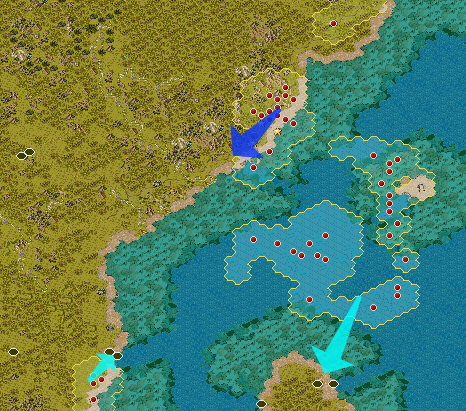
The battle for India is near over, and it's been a long, hard-fought ... five days!? Somehow this seems impossible. We've managed to take all this territory in less than a week. Perhaps there's been a time shift that we weren't told about. Maybe we're now slipping through time. Is this an after-effect of the jump? If this keeps up, the war's going to feel like it lasts forever.
Axis Turn 19: April 15, 1942
Cloudy (Mud)
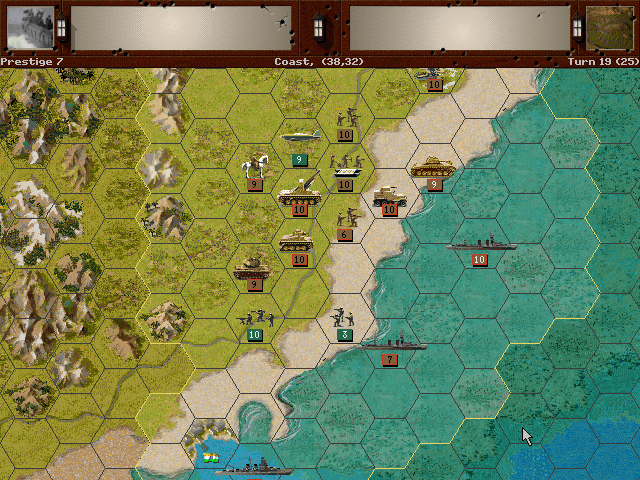
As we approach the port of Vishakhputnam, our ships continue to suppress the enemy infantry along the route, and with slightly improving weather, we're taking ground a bit more quickly.
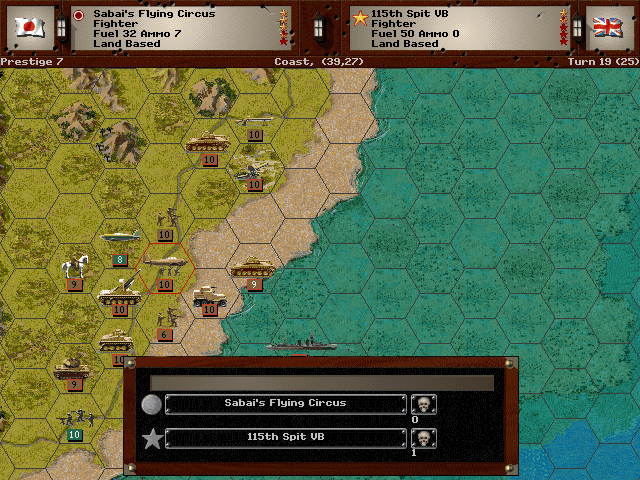
Sabai's Flying Circus gets a chance to push their new planes to the limit, and go after those Spitfire Vb's.
Allied Turn 19: April 15, 1942
Cloudy (Mud)

Some of our Zeros get attacked by more Hurricane fighters, but they are surely not up to the task of shooting our planes down.
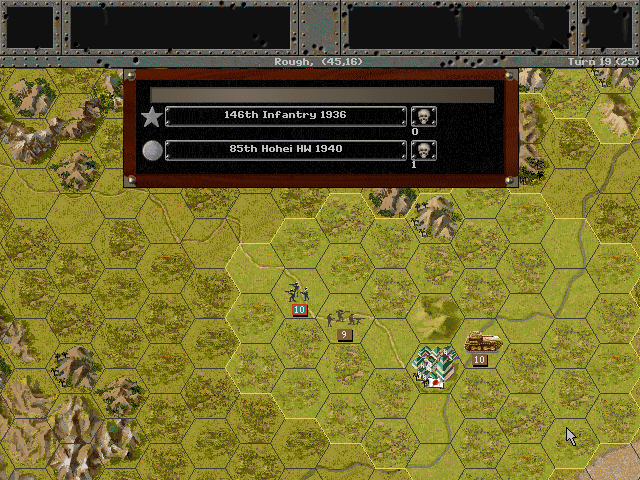
Fighting renews outside of Cuttack.
Axis Turn 20: April 15, 1942
Rain (Mud)
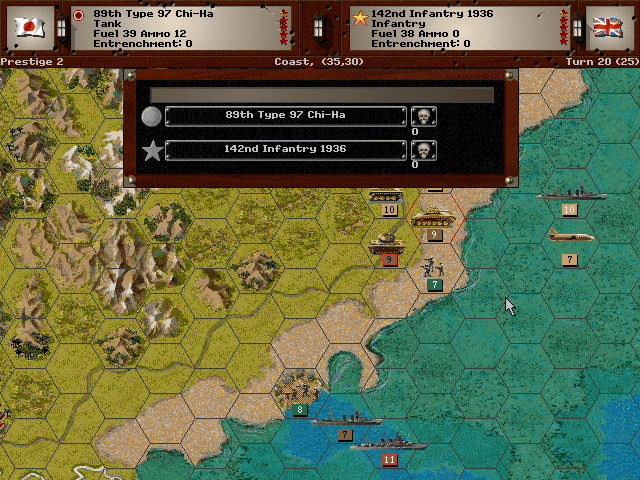
The rain hasn't gone away, and that slows down our progress toward Vishakhputnam to a crawl.
Allied Turn 20: April 15, 1942
Rain (Mud)
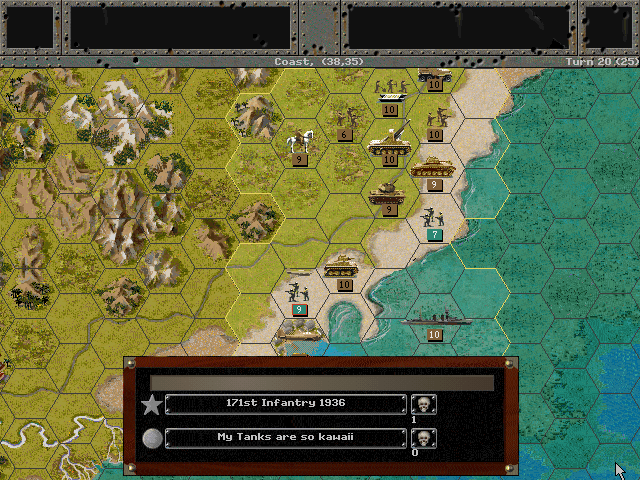
The British forces are unable to drive off our little tanks.

At Cuttack, they try a bit of trickery and send their forces past the road. Their scheme is foiled by the presence of our tanks close to the city.
Axis Turn 21: April 16, 1942
Rain (Mud)
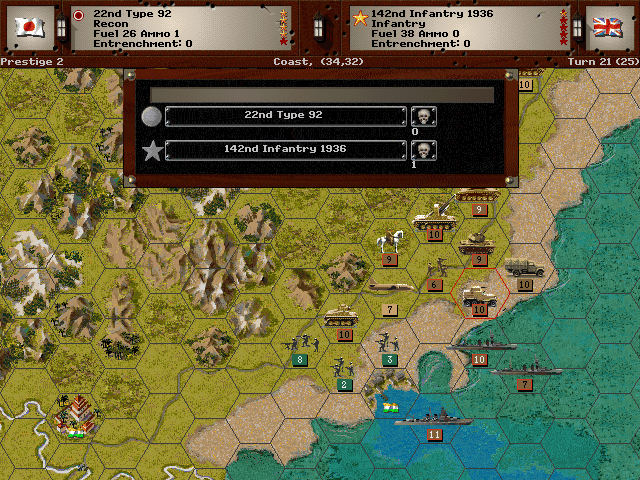
We're pushing hard near Vishakhputnam now, and we expect the British line to break soon.
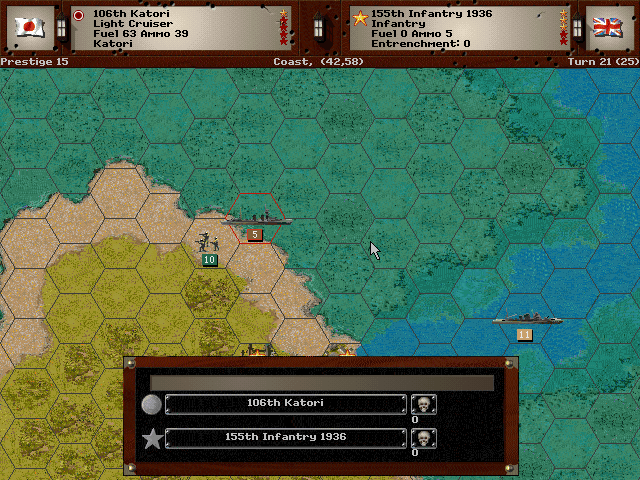
Preparations begin for the invasion of Ceylon as our support ships reach the shoreline.

The attack on Madras is about to be renewed as our paratroops prepare to land on the north side of the city.
Allied Turn 21: April 16, 1942
Rain (Mud)
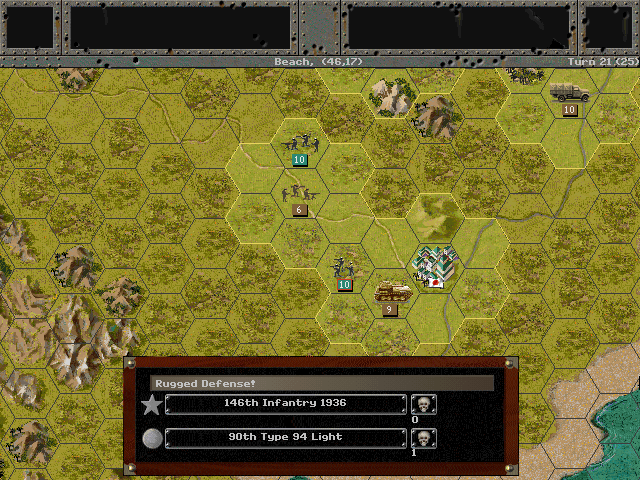
Attacks persist near Cuttack, but little action occurs elsewhere.
Axis Turn 22: April 16, 1942
Cloudy (Mud)
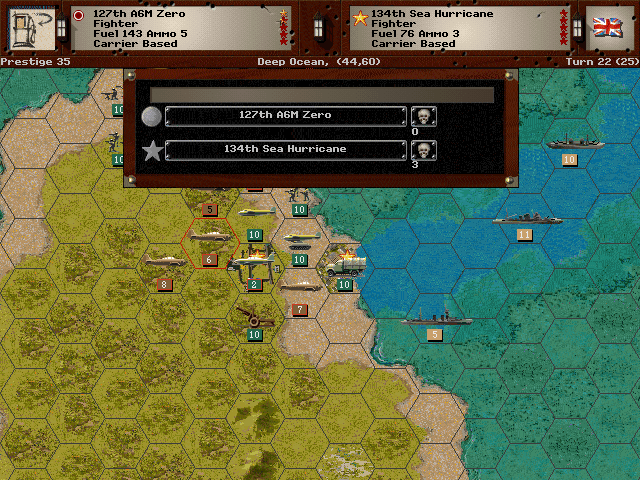
It looks like most of the carrier planes have moved to the airfield near Trincomalee. Our fighters attack to clear the skies for our own bombers.
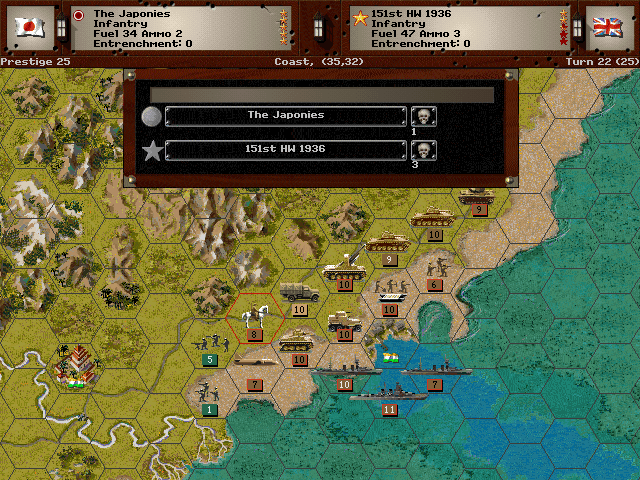
Vishakhputnam is reached, just as we run out of supplies. Thankfully we'll be able to use the port to build them back up more quickly.
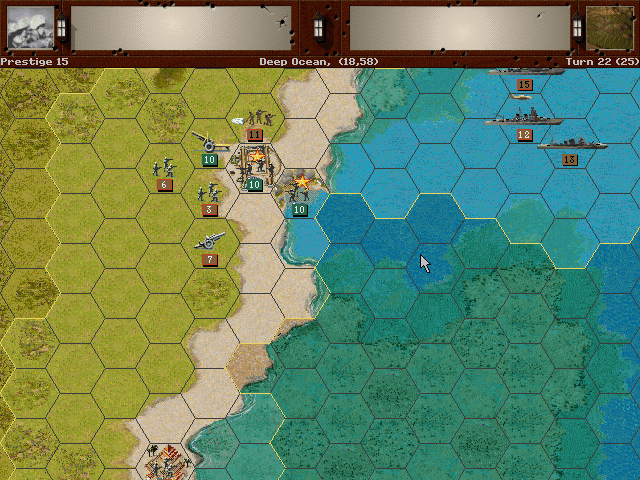
The French attack on the south side of Madras to support our airborne assault. Some of our ships arrive to provide artillery support as well.
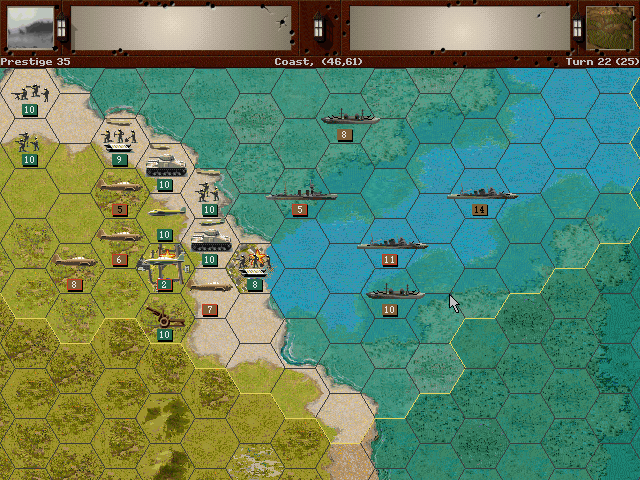
Bombardment begins at Trincomalee as well.
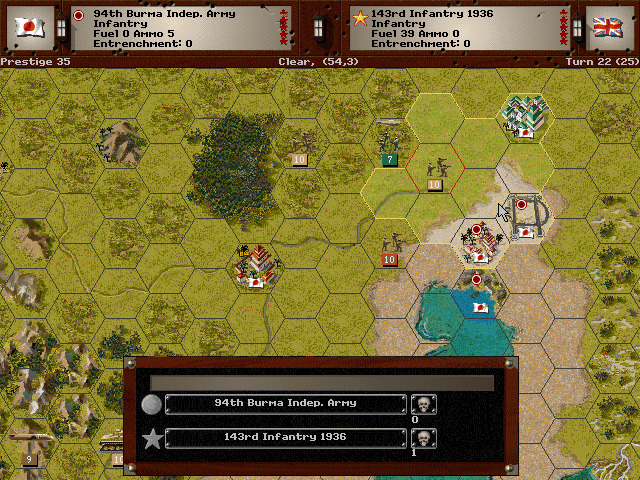
The Indian National Army is slowly reducing the last of the British forces near Calcutta.
Allied Turn 22: April 16, 1942
Cloudy (Mud)
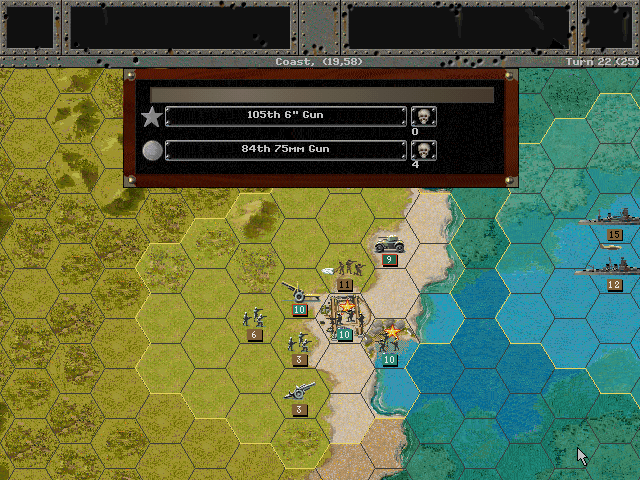
The artillery at Madras focuses on the French forces.
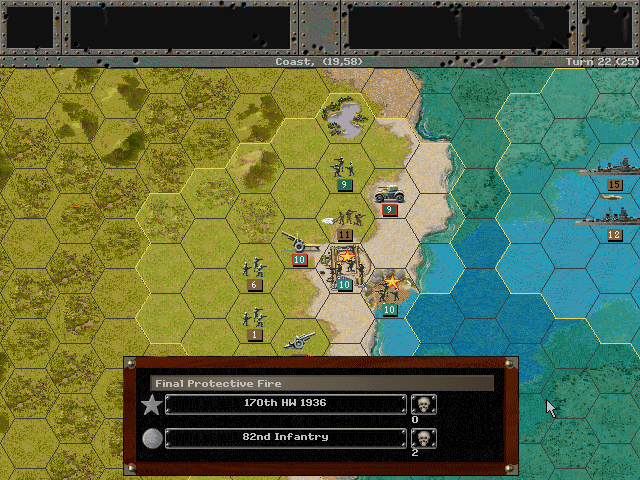
British troops arrive from the north to engage the Teishin Shudan.
Axis Turn 23: April 16, 1942
Fair (Mud)
The weather has finally cleared, and our fortunes are finally changing.
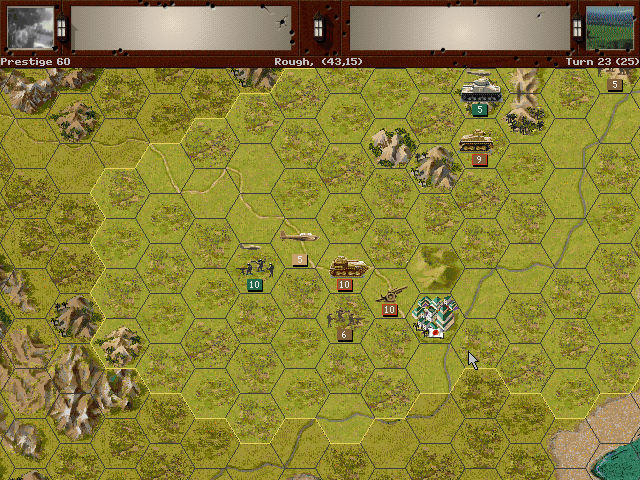
We shore up the defenses of Cuttack.
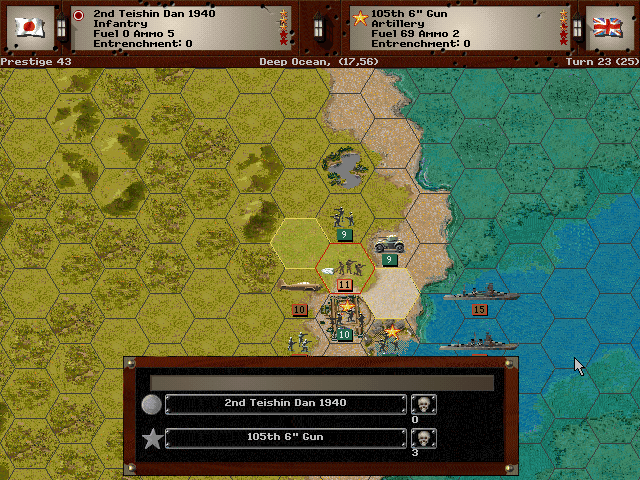
With support from the air and the ships off shore, we're able to eliminate the guns at Madras.
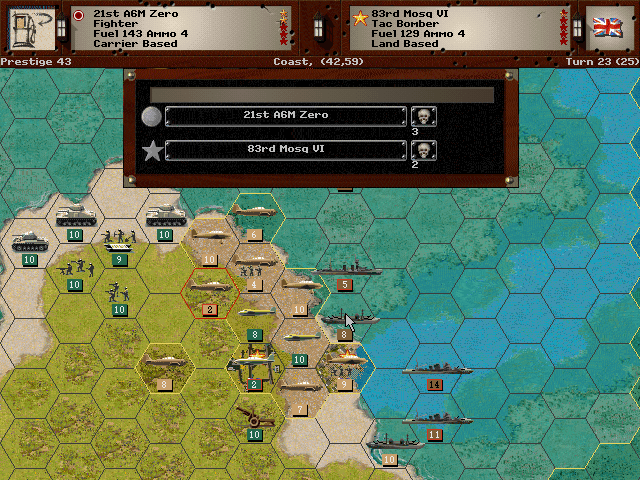
The 21st Zeros take a lot of hits from the Mosquitoes and will be forced to head back to the Kaga.
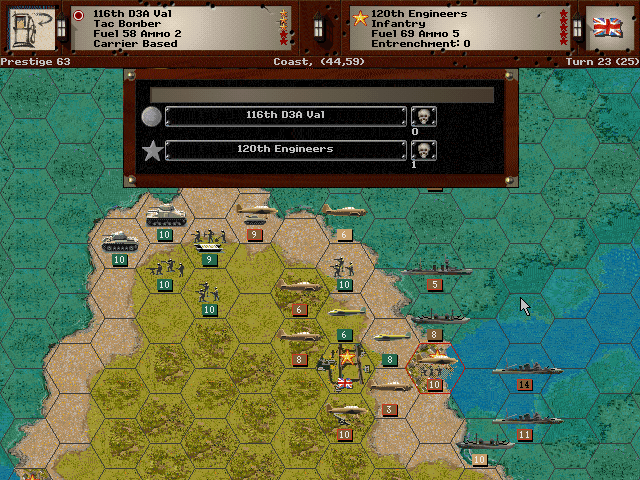
Our dive bombers start to soften up the defenses on Ceylon.
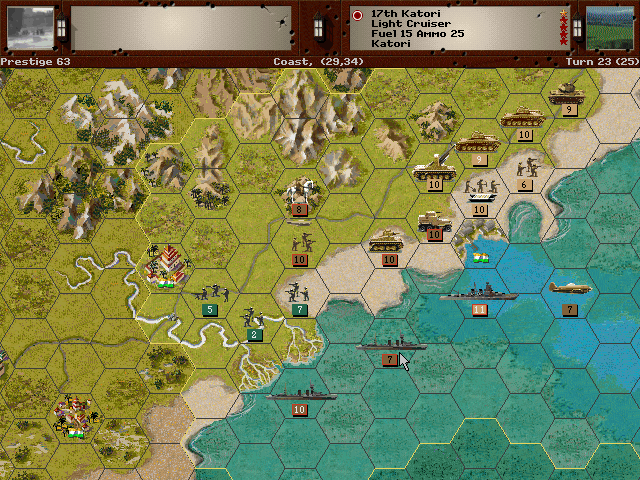
The cruisers near Vishakhputnam suppress the enemy troops while our ground forces replenish their ammo and fuel.
Allied (United Kingdom) Turn 23: April 16, 1942
Fair (Mud)

The British infantry are unable to deal with our experienced airborne soldiers.

More forces are heading from Colombo to defend the northern beaches of Ceylon.
Axis Turn 24: April 16, 1942
Fair (Dry)
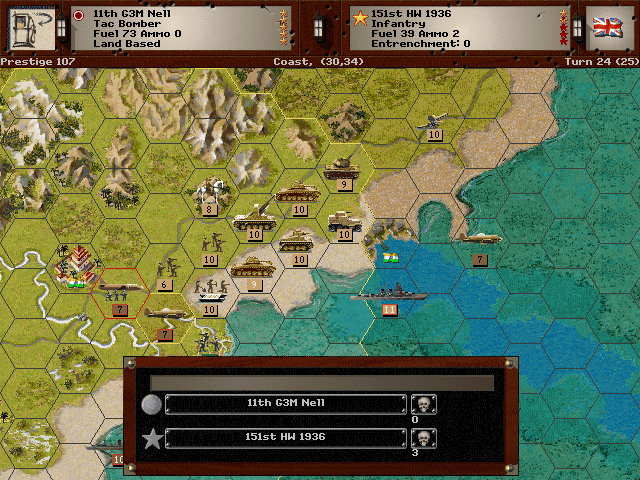
Clear skies let us drop bombs all over the enemy units on the Godavari river.
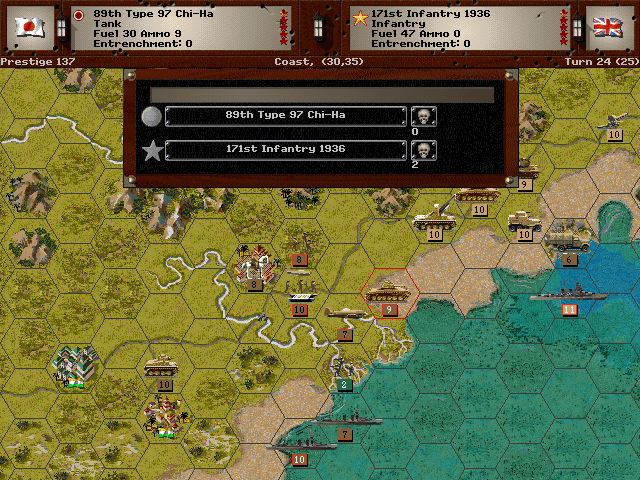
After that we nearly finish them off, and when our troops roll over the bridges, we find the cities beyond totally undefended.
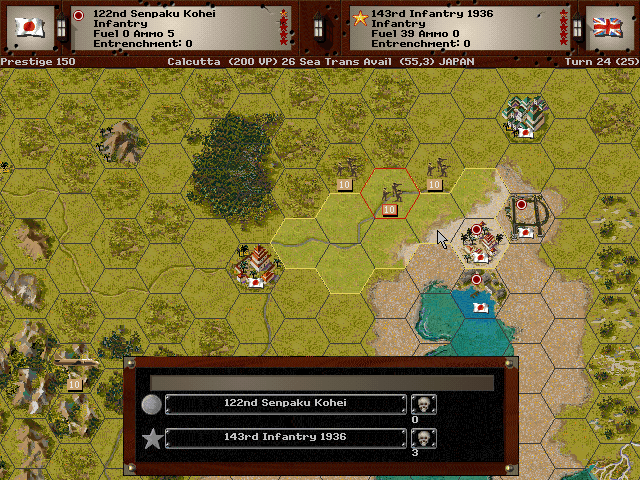
Even around Calcutta, we're having more success eliminating enemy forces.
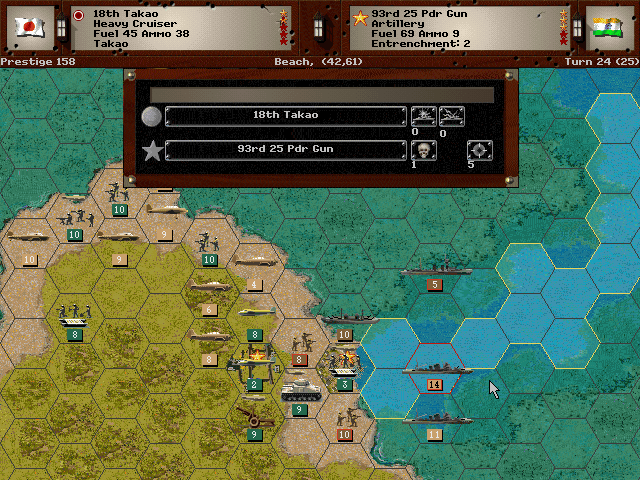
The first of our assault troops get ashore near Trincomalee. Air raids and naval strikes reduce the enemy forces.
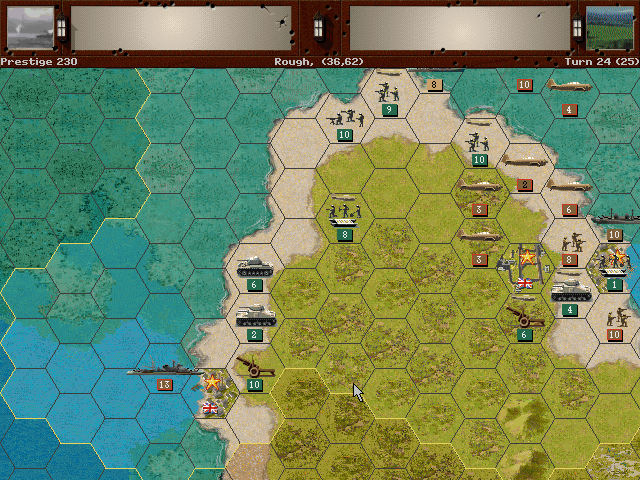
We don't have any units landing near Colombo, although we could likely take it if we'd sent them. It appears most of the enemy units there have moved out to the north side of the island.
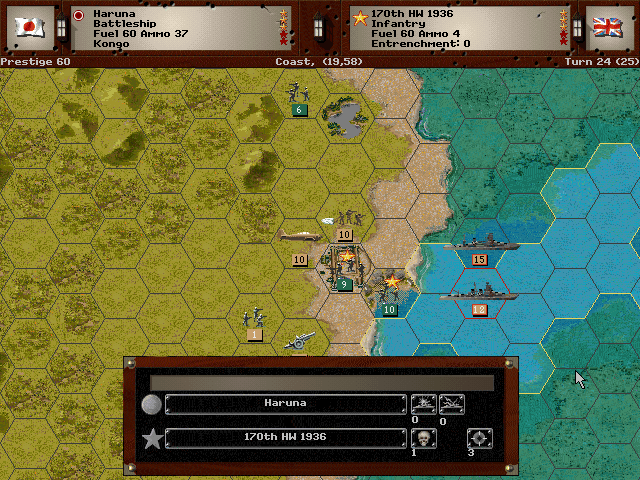
The Haruna suppresses the city's defenders while our airborne soldiers drive them out.
Allied Turn 24: April 16, 1942
Fair (Dry)

The Daimlers finally eliminate the French artillery, but the Teishin Shudan hold on to their position in the city.
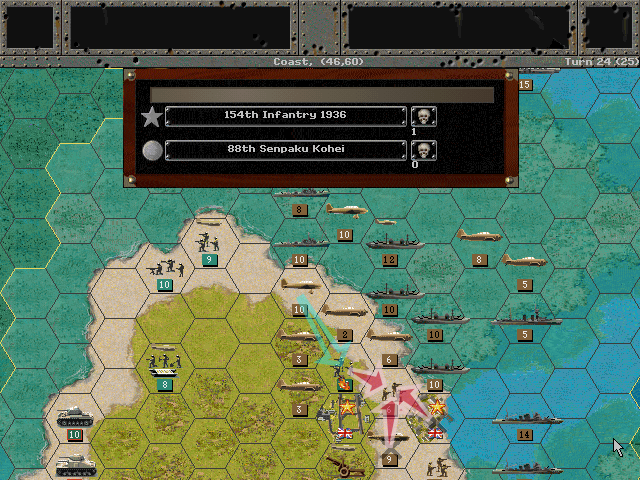
The Senpaku Kohei hold off a series of assaults and even utterly destroy two attacking units. But all the combat leaves them vulnerable to artillery fire from near the airfield, which causes the unit to finally break apart.
Axis Turn 25: April 16, 1942
Fair (Dry)
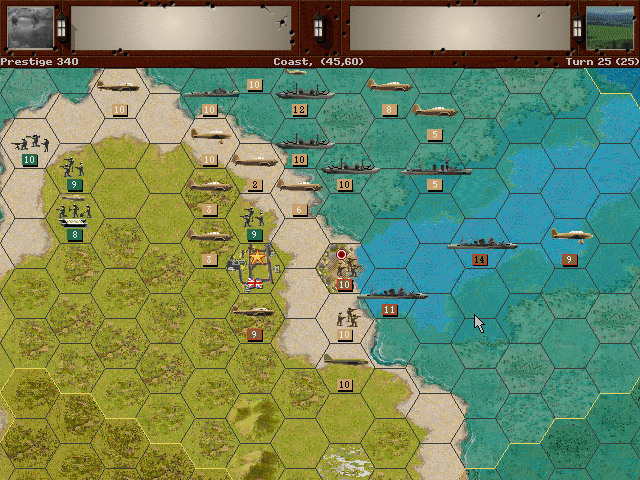
Trincomalee is captured by more landing troops.
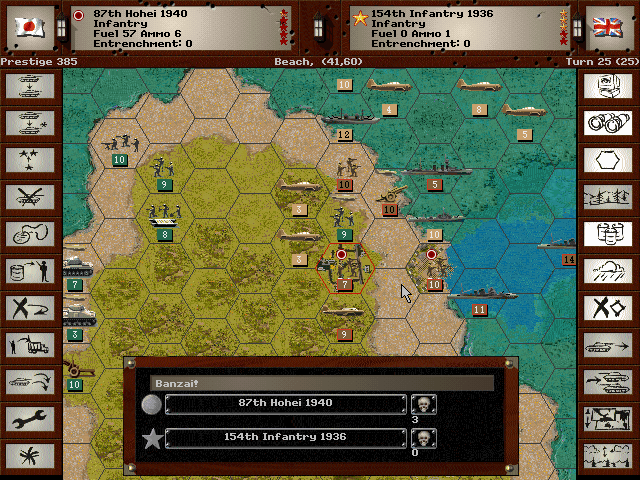
The airfield is taken as well, although when the troops attempt to press their luck the further attack goes poorly. It does allow the second wave of our troops to get ashore.
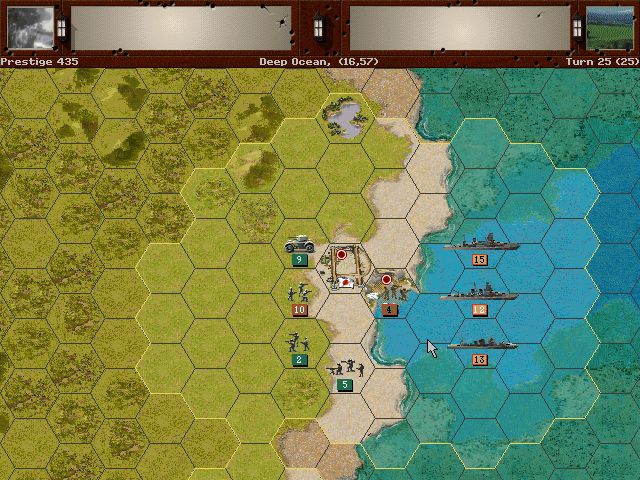
Madras is taken, but with the French cut off, we lack the troops to hold on to the whole city.
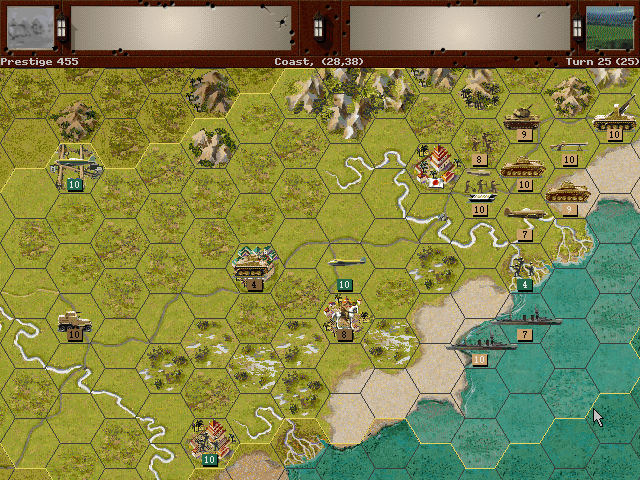
Most of the rest of the coastline is entirely clear as well.
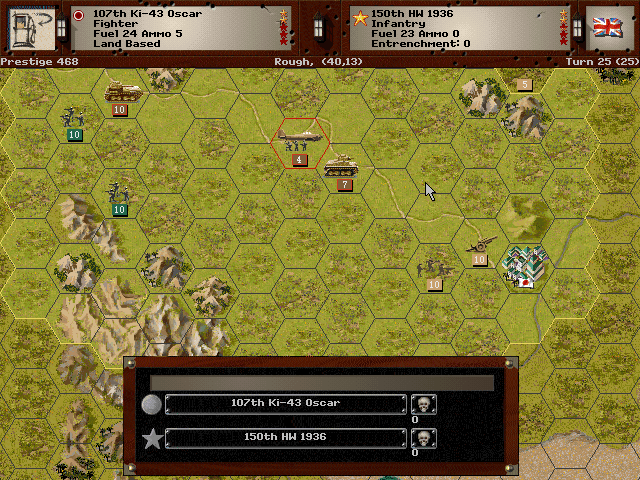
Cuttack is properly defended, and we could probably push inland there as well.
Allied Turn 25: April 16, 1942
Fair (Dry)
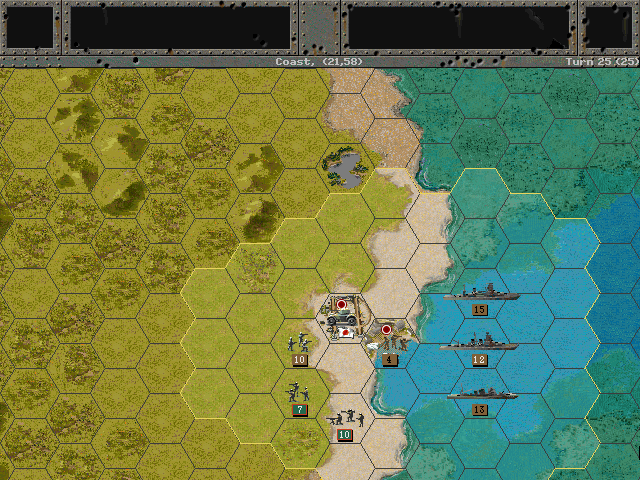
Part of Madras is lost, but we'll get complete control before long.

The defenders on Ceylon have no hope unless they can at least knock out our guns. While they do inflict heavy casualties, there are not enough of them to dislodge us from our position.
In a surprisingly short time, we've achieved total dominance of the Bay of Bengal. With these bases under our control, Britain is sure to withdraw from India. That will give us a free hand on the ocean and access from East Asia to the rest of the continent!
Result: Decisive Victory
Final VP: 1899-1129
Final Prestige: 1318
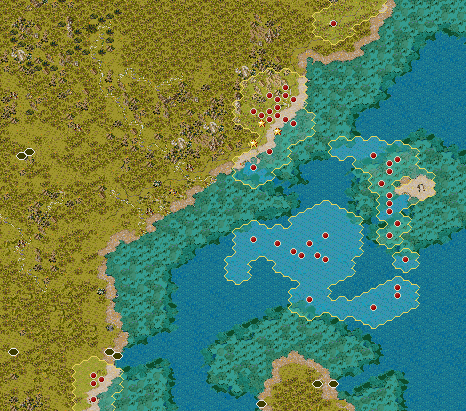
Type 88 75 mm AA Gun
PG Name: 75mm Model 88 Type: Air Defense
Effective Date: 7/36
Value:12 Cost:144 Spot:1 Move:1 MM:Gun Trans:Naval Fuel: -
Init:2 Range:2 SA:[11] HA:[8] AA:11 NA:0 GD:2 AD:5 CD:0 TT:Soft Ammo:6
Yet another weapon that was decent at the time it was first produced in the 1930s, but proved to be obsolete as the war dragged on into the 1940s. Despite its limitations as an anti-air gun, it was quite usable as an anti-tank gun. That said, it wasn't particularly mobile, and was unlikely to last long in a sustained firefight.
In-game analysis: An okay gun for the price. Similar models from other countries tend to have better range and anti-armor ability, which makes this one a model I'm not too enthused about.
Aoba-class Cruiser (2 built)
PG Name: Aoba/Aoba 1944 Type:Heavy Cruiser
Effective Date: 7/40 / 1/44
Value:8/11 Cost:144/198 Spot:2 Move:7 MM:Deep Naval Fuel: 60
Init:4 Range:4 SA:5 HA:8 AA:[4]/[6] NA:17 DA:0 GD:17 AD:7 TD:10 Ammo:40
Special: Night Optics, [1944]Radar
The Aoba class was just a minor modification of the Furutaka class cruiser; both were originally produced in the 1920s. The modernization that this unit represents gave them more powerful guns which they definitely needed, and a bit more powerful engine. They were still lightly armored, although apparently this was one of the first Japanese designs to use armor structurally in order to save on weight. Neither of the two ships in this class survived the war, although the Aoba made it through several battles and didn't go down until 1945.
In-game analysis: Not all that bad, given that it's cheap. It's rather weak for a Heavy Cruiser, however, and given that Light Cruisers are more versatile (they can travel into coastal water), I'd rather have a strong Light Cruiser than a weak Heavy one.